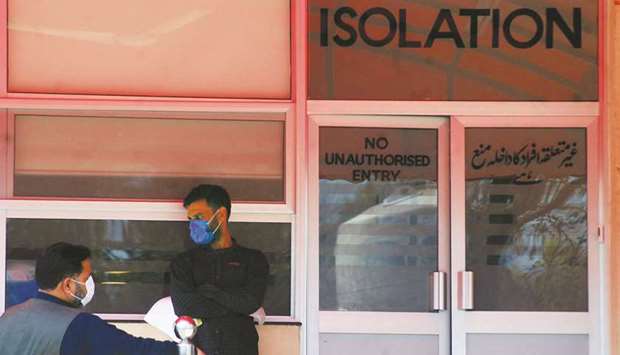Pakistan may be headed for a second nationwide lockdown if coronavirus infections keep spiking and people continue to ignore safety guidelines, health officials warned yesterday with Prime Minister Imran Khan calling a meeting of the National Coordination Committee today.
The premier will be briefed by the National Command and Operations Centre (NCOC) on the coronavirus situation.
The development comes hours after Federal Minister for Planning and Development Asad Umar said the government was deliberating over additional measures to contain the spread of coronavirus.
Taking to Twitter, Umar said the NCOC discussed additional measures yesterday to control the rising spread of Covid-19. “Recommendations will be tabled in the NCC being called for tomorrow (Tuesday),” he continued. “Need to take immediate measures which have the most impact on disease spread without curtailing economic activity.”
Pakistan’s positivity rate surged past 4 per cent on Sunday the highest since August. The country recorded 1,123 new Covid-19 cases in a single day peak over three months with at least 12 fatalities.
The federal authorities have issued multiple warnings in the past few days on the ignorance towards implementation of Covid-19 SOPs as a second wave hits the country.
Last week, NCOC issued fresh rules regarding the closure of wedding halls and shopping malls and made the wearing of face mask mandatory.
“NCOC has tightened restrictions on some high-risk public activities but the rising spread of the disease can only be controlled if people believe in the need for precautions,” said Umar.
Director of General Health Services Islamabad Dr Hassan Orooj regretted that the public was not following the SOPs, adding that a second lockdown now seemed “inevitable”.
Pakistan imposed a countrywide lockdown on March 24, but began easing it 21 days later. The deadly virus reached its peak in mid-June, when over 6,000 infections were recorded in a day with over 100 deaths.
Still, Prime Minister Imran Khan, who frequently spoke against strict lockdowns stressing the economic impact on daily wagers, announced the reopening of industrial and commercial sectors in phases with government-mandated health guidelines.
The country nonetheless saw a sharp decrease in cases in August, with as few as 213 new cases reported on August 30. Following this, the government decided to allow educational institutes to reopen from mid-September.
By October, infections were on the rise again.
In a recent interview, Dr Faisal Sultan, Special Assistant to the Prime Minister on Health, admitted the country was in the grip of a new wave.
“The second wave is here in Pakistan,” he said. “The trends are not very good.”
Dr Orooj agreed with the assessment. “Pakistan has been in the second wave for quite some time now,” he explained, “Take Islamabad, for instance, where the cases jumped from 30 on October 1 to 250 on October 31.
Separately, Pakistan’s positivity rate has also registered a steady increase.
On Sunday, the positivity rate was 4.02 per cent, as per the official tally. Although, the percentage is much below the World Health Organization’s (WHO) threshold of 5 per cent, it is still the highest recorded since early August.
Health officials insist that if people follow guidelines such as wearing face masks in public spaces and the government relaunches a mass awareness campaign about the virus, another lockdown can be avoided.
In Punjab, Captain (retired) Mohamed Usman Younis, secretary at the Primary and Secondary Healthcare Department, said “micro-smart lockdowns” and effective home isolation of positive patients in the province has kept the situation in check so far.
But a positivity ratio of above 10 per cent, an increase in hospital admissions and the usage of ventilators “may trigger lockdowns” in cities.
“The decision to impose lockdown on national or provincial levels will require assessment of how extensive the positivity rate increase is among multiple cities,” he said.
But Dr Orooj said the positivity rate is not the only indicator to take into consideration when deciding on a lockdown.
“The trends are also very important,” he said, “If the cases are increasing by leaps and bounds but the positivity remains low due to Pakistan’s large population then that is a statistical problem. If the cases are increasing three-folds or five-folds in 15-20 days, then you have a case for a second lockdown.”

Men wearing protective masks stand outside an isolation ward at the Pakistan Institute of Medical Sciences in Islamabad. (Reuters file photo)


